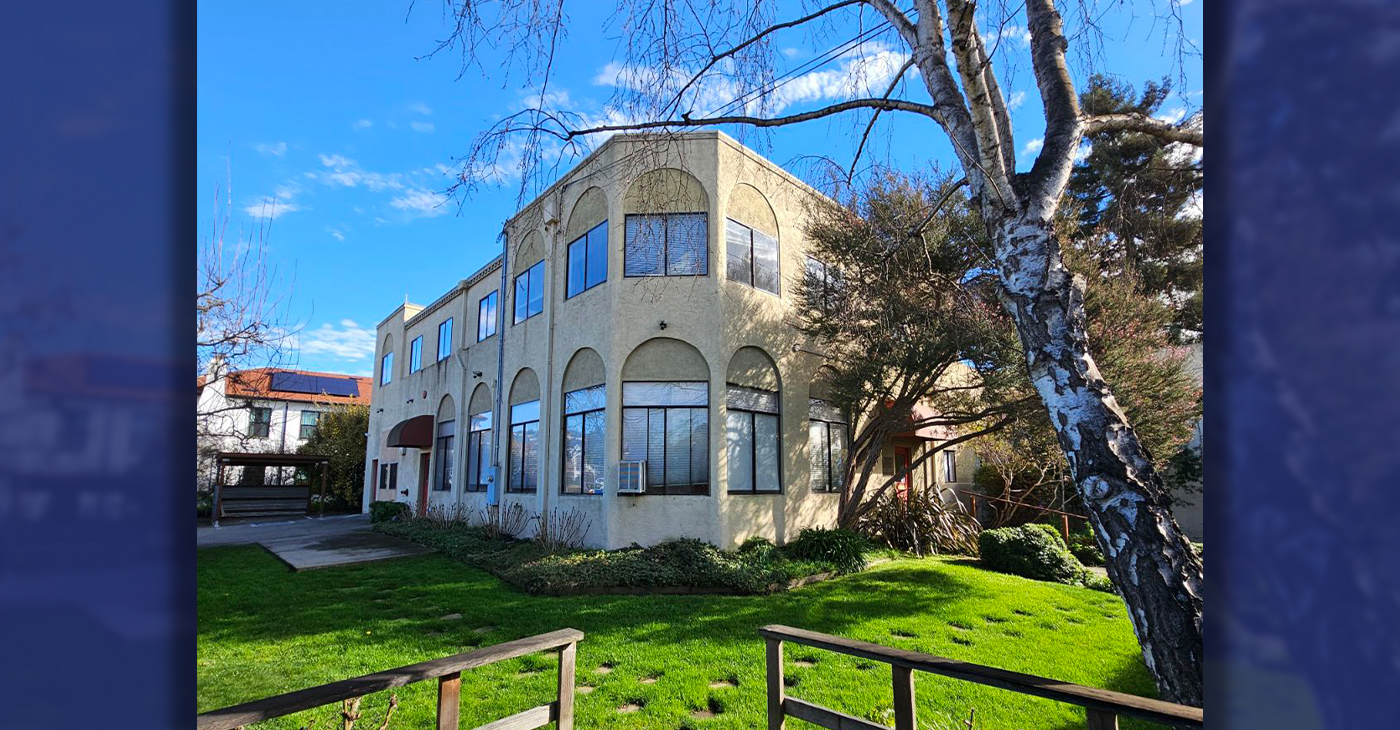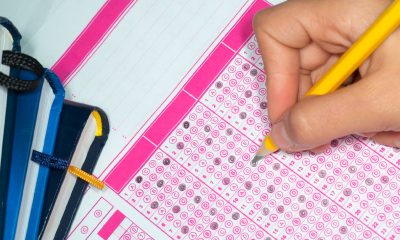Health
New Study Reveals Effective Treatment Program for Breast Cancer Survivors

This undated handout photo provided by UCLA’s Jonsson Comprehensive Cancer Center shows Dr. Patricia Ganz of the University of California, Los Angeles, who chaired an Institute of Medicine panel that found the U.S. is facing a crisis in how to deliver cancer care, as the population ages and treatment becomes increasingly complex. (AP Photo/ UCLA’s Jonsson Comprehensive Cancer Center)
Special to the NNPA from Our Weekly
In a new study that could help improve the day-to-day quality-of-life for women with breast cancer, UCLA researchers have developed a cognitive rehabilitation program to address post-cancer treatment cognitive changes, sometimes known as “chemo brain,” which can affect up to 35 percent of post-treatment breast cancer patients.
An estimated one in eight women will develop invasive breast cancer in their lifetime, and post-treatment, the mental “fogginess” of “chemo brain” can prevent them from staying organized and completing everyday activities, such as sticking to a schedule, planning a family gathering or forgetting where they left the car keys.
This new study, led by breast cancer research pioneer and UCLA Jonsson Comprehensive Cancer Center member Dr. Patricia Ganz, builds upon her earlier research that found a statistically significant association between neuropsychological test performance and memory complaints in post-treatment, early stage breast cancer patients.
“We invited the women to participate in a research study that assigned them to early or delayed treatment with a five-week, two-hour group training session, where a psychologist taught them strategies to help them with their memory and maintaining their ability to pay attention to things,” said Ganz, director of prevention and control research at the Cancer Center. “These are activities we call executive function and planning, or the things all of us do in order to organize our day.”
The intervention program also included homework and practice activities that they would discuss at the weekly sessions. The goals of these exercises were to improve memory and cognitive function.
Dr. Linda Ercoli, an associate clinical professor of health sciences at the UCLA Semel Institute, was responsible for the development of the cognitive rehabilitation intervention program and either delivered or supervised other clinicians who provided the group training sessions.
“We gave women exercises on, for example, how to remember a ‘To-Do’ list, remembering to buy items at the store, or planning a party and deciding what type of food should be served to guests,” said Ercoli, also a co-author of the study. Participants were given real-life tasks to complete that would use these types of strategies to improve cognitive function.”
All of the women who participated in the research study, whether they received the intervention early or at a delayed time point, completed questions about their mood and mental functioning and had detailed neurocognitive testing before learning which group they would be in, immediately at the end of the training course and then again two months later. Most of the women also had resting EEG (brain wave) testing to see if this would measure changes in how the women fared throughout the study.
Ganz and Ercoli found that the early intervention group (32 women) reported improvement in memory complaints and test functioning, while the delayed intervention control group (16 women), did not improve in either their cognitive complaints or test performance. The intervention group participants showed continued improvement two months after completion of the rehabilitation program.
“The brain wave pattern in the intervention group actually normalized,” said Ganz. “We hope that this might be an effective biologic way to assess the cognitive effects of cancer treatment in the future.”
• Breast cancer survivors with cognitive complaints participated in five-week training program to help with memory and concentration and were compared to survivors who received delayed treatment at end of study
• The early intervention group (32 women) had significant improvement in cognitive complaints and improved performance on standard memory tests compared to the delayed treatment group (16 women)
• EEG brain wave patterns improved in the early intervention group, suggested that abnormal brain changes can be reversed with cognitive rehabilitation
The next steps will allow other researchers to review and test this cognitive rehabilitation program in larger groups of patients, and to potentially develop strategies to provide intervention much earlier in the course of breast cancer treatment to either prevent difficulties or hasten recovery.
This study, which found agreement between improvements in patient-reported cognitive complaints and neurocognitive test performance added to the growing body of literature demonstrating the validity of patient complaints. Furthermore, the intervention results provided important encouragement that these complaints can improve with appropriate training.
The study was funded by the Breast Cancer Research Foundation and the Jonsson Comprehensive Cancer Center Foundation.
The randomized clinical trial results are now available online in the journal Psycho-Oncology.
Community
Calif. Dept. of Public Health: Got Milk Allergies? Don’t Eat Dave’s Bakery Cornbread
The California Department of Public Health (CDPH) issued a warning on Jan. 26, instructing consumers with milk allergies or “severe sensitivity to milk” in the state to not eat Dave’s Bakery Corn Bread due to “risk of illness.” The CDPH warns that consumption of the corn bread manufactured by a Gardena-based company — with expiration dates up to June 18, 2024 — may lead to “life threatening” reactions.

By California Black Media
The California Department of Public Health (CDPH) issued a warning on Jan. 26, instructing consumers with milk allergies or “severe sensitivity to milk” in the state to not eat Dave’s Bakery Corn Bread due to “risk of illness.”
The CDPH warns that consumption of the corn bread manufactured by a Gardena-based company — with expiration dates up to June 18, 2024 — may lead to “life threatening” reactions.
“This warning applies only to the Corn Bread produced by Bake R Us, DBA Dave’s Baking Company and distributed to schools, retail facilities and in vending machines primarily in southern California,” the DCPH statement reads.
“This product should not be confused with other similarly named companies with national distribution,” it continues.
According to the CDPH, although the corn bread product contains whey, which is a milk allergen, there is no allergy warning label on the packaging, though it is required by state law.
So far, authorities say, no illnesses have been reported in the state, but if anyone finds the products on sale anywhere in the state, they should call the CDPH complaint hotline at (800) 495-3232 or file a report online at CDPH.ca.gov
The CDPH is also recommending that people who have eaten the product and are experiencing any reaction or ill effects should consult their health care provider.
Bay Area
East Bay Regional Park District Issues Rattlesnake Advisory
The East Bay Regional Park District released an advisory today on rattlesnakes, which emerge from winter hibernation in early spring and become more active. Warm weather can bring more potential for rattlesnake encounters with humans and dogs, particularly along trails and roads.

The Richmond Standard
The East Bay Regional Park District released an advisory today on rattlesnakes, which emerge from winter hibernation in early spring and become more active.
Warm weather can bring more potential for rattlesnake encounters with humans and dogs, particularly along trails and roads.
Visitors are encouraged to avoid hiking alone in case of an emergency, to scan the ground ahead as they walk, jog or ride, stay on trails avoiding tall grass, and to look carefully around and under logs and rocks before sitting down. Keep your dog on your leash to be extra safe, park officials said.
If you encounter a rattlesnake, leave it alone – it is unlawful to capture or harm one. Move carefully and slowly away or around it and give it plenty of space, park officials said.
Those who are bitten by a rattlesnake are instructed to stay calm by lying down with the affected limb lower than the heart, then having someone call 911.
Getting medical attention is critical.
Those bitten should not use tourniquets, “sucking,” or snake bite kits. If you are by yourself, walk calmly to the nearest source of help to dial 911, do not run.
If bitten by any other type of snake, wash the wound with soap and water or an antiseptic and seek medical attention.
Not sure what bit you? Check the bite for two puncture marks (in rare cases one) associated with intense, burning pain, which is typical of a rattlesnake bite. Other snakebites can leave marks without associated burning pain.
The Northern Pacific rattlesnake is the species found in East Bay Regional Parks. Snakes are important to the natural environment, helping to control rodents and other reptile populations. But enjoy them from afar.
For more information, download the Park District’s Common Snakes brochure or watch our Gopher Snake or Rattlesnake video to learn how to tell the difference between rattlesnakes and gopher snakes. Additional information is available at ebparks.org/safety/wildlife-encounters.
Alameda County
A Safe Place, Bay Area Domestic Violence Community Organization, Opens New Service Center in Oakland
Oakland-Bay Area non-profit, A Safe Place, announces the grand opening of its newly purchased building in Oakland that will be a service center for families that have suffered from domestic violence. The new, two-story building has over six new service rooms for counseling, mental health support groups, legal services, children’s treatment, safe space for community engagement, and partnership activities.

By Courtney Slocum Riley
Special to The Post
Oakland-Bay Area non-profit, A Safe Place, announces the grand opening of its newly purchased building in Oakland that will be a service center for families that have suffered from domestic violence.
The new, two-story building has over six new service rooms for counseling, mental health support groups, legal services, children’s treatment, safe space for community engagement, and partnership activities.
Domestic violence occurrences and offenses account for a considerable amount of all violent crimes in Alameda County. A Safe Place is attempting to provide a safe place for families to heal. A Safe Place is the only comprehensive domestic violence assistance program including a safehouse, in Oakland.
The grand opening celebration will also serve as a fundraiser to build out healing, therapeutic spaces for children and adult victims and survivors and survivors of domestic violence (male and female).
The new service center will expand the work of the organization, founded in 1976 when a group of women working in San Francisco came together to address the urgent need for a shelter in the East Bay. A year later, they founded A Safe Place (ASP) in Oakland. Run solely by volunteers, they set up a crisis line to offer crisis counseling and information to battered women and their children.
The organization serves over 500 adults and children annually through a host of services including crisis counseling via 24-hour crisis line, emergency motel and safehouse sheltering, mental health services (counseling and support groups).
Under the leadership of Executive Director, Carolyn Russell, the organization has grown from a single program into the comprehensive domestic violence and assistance program. ASP strives to meet the growing and diverse needs of our growing community.
The organization hopes to complete all the upgrades and therapeutic room improvements by August 2024. The public is invited to donate to the effort by using the website at www.asafeplace.org/donate. The organization also accepts in-kind gifts as well as items from the organization’s Amazon Wishlist.
-

 Community3 weeks ago
Community3 weeks agoFinancial Assistance Bill for Descendants of Enslaved Persons to Help Them Purchase, Own, or Maintain a Home
-

 Business3 weeks ago
Business3 weeks agoV.P. Kamala Harris: Americans With Criminal Records Will Soon Be Eligible for SBA Loans
-

 Activism3 weeks ago
Activism3 weeks agoOakland Post: Week of April 10 – 16, 2024
-

 Community3 weeks ago
Community3 weeks agoAG Bonta Says Oakland School Leaders Should Comply with State Laws to Avoid ‘Disparate Harm’ When Closing or Merging Schools
-

 Community2 weeks ago
Community2 weeks agoRichmond Nonprofit Helps Ex-Felons Get Back on Their Feet
-

 Community2 weeks ago
Community2 weeks agoOakland WNBA Player to be Inducted Into Hall of Fame
-

 Activism1 week ago
Activism1 week agoOakland Post: Week of April 24 – 30, 2024
-

 Community2 weeks ago
Community2 weeks agoRPAL to Rename Technology Center for Retired Police Captain Arthur Lee Johnson























































